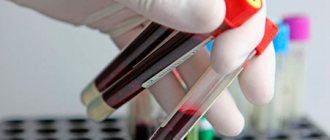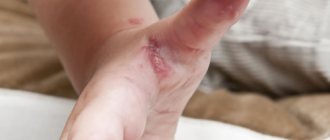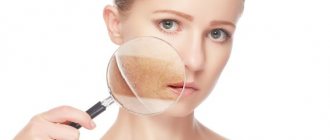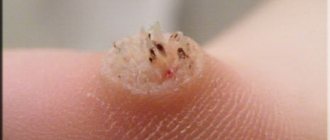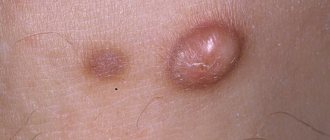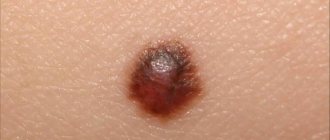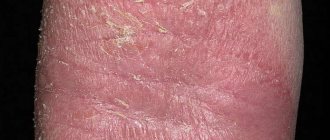Symptoms of sun allergy
Surely everyone has burned in the sun at least once. The skin turns red, bakes, and cannot be touched without painful discomfort. Almost everyone has experienced these sensations, especially people who have naturally white skin.
Allergies manifest themselves somewhat differently.
The symptoms that appear with this unpleasant disease are as follows:
- redness of the skin;
- the appearance of a rash, which can form continuous swollen plaques;
- blisters;
- painful sensations in the allergy zone;
- itching
Itching, itching and more itching! The body begins to itch very much, which is strictly forbidden to do, otherwise you can get an infection under the skin, which is completely bad.
The same applies to blisters: under no circumstances should they be punctured or pressed, such actions are also fraught with infection. And it looks far from aesthetically pleasing.
As for the general symptoms of an allergic reaction, with photodermatosis the following may be observed:
- elevated temperature;
- nausea;
- dizziness;
- fainting.
In a word, all the same symptoms that accompany heat stroke. If a person loses consciousness and becomes covered in spots, he must be immediately moved to the shade and a doctor is called.
As a rule, rashes and redness appear in the décolleté, neck, and less often on the stomach, back, arms and legs, and in other areas not covered by clothing.
Solariums, melanoma.
Skin cancer, melanoma. Excessive tanning causes people to get skin cancer even more often than smokers get lung cancer from smoking. Types of deadly skin cancer: benign and malignant skin tumors, basal cell carcinoma, squamous cell carcinoma and melanoma - the most dangerous case. Getting sunburned is the main risk factor for getting melanoma. If a person tans but does not get sunburned, the risk of developing melanoma is much lower than with sunburn. Melanoma Facts: Melanoma is one of the most common types of skin cancer in young people, especially young women. Melanoma is a rapidly progressing cancer that spreads very quickly and metastasizes throughout all organs. In addition to the surface of the skin, melanoma can develop in the eye (no one except an ophthalmologist, when examining the fundus of the eye, can detect this), on the mucous membranes of the intestines and esophagus (also quite difficult to detect), in the oral cavity. If a person has had more than 5 sunburns in their entire life history, then the risk of melanoma increases by 2 times. 86% of melanoma cases are caused by sun exposure! According to the American Cancer Society, 2 million cases of sun-related skin cancer are diagnosed every year. The WHO said it records 3 million cases of skin cancer per year (from all causes), of which 132,000 are melanoma. Tanning devices are a leading cause of cancer in humans, along with factors such as plutonium, cigarettes and ultraviolet radiation from the sun. This is the official conclusion of the International Agency for Research on Cancer and a branch of WHO. Solariums destroy the first sign of youth - healthy skin. The risk of developing melanoma is directly proportional to the time a person spends in a solarium. Specific examples with numbers: People who have used tanning beds 10 times or more have a 34% risk of melanoma compared to those who have never used tanning beds. If a person has spent 10 to 19 hours in a solarium in his entire life, then the risk of melanoma increases by approximately 80%. If more than 50 hours, then the risk increases almost 3 times! And this risk does not decrease over time. People who first used tanning beds before age 35 have a 75% increased risk of melanoma. 55% of women from Sweden who visited a solarium more than once a month were diagnosed with melanoma! Lamps in solariums emit 10-15 times more skin-damaging UVA rays than the sun. 20 minutes in a tanning machine is equivalent to 4 hours of tanning on the beach. More than 400 thousand cases of skin cancer in the United States alone are associated with the use of tanning beds. Tanning beds are a worldwide problem and are being banned around the world: 12 US states and the District of Columbia have banned non-medical use of tanning beds for people under 18; The British Medical Association and the Institute of Cancer Research have achieved a ban on visiting solariums for people under 16 years of age; Brazil and Australia have banned tanning beds altogether; But photoepilation does not increase the risk of skin cancer, since the radiation from this type of hair removal is not ultraviolet. The dangers of excessive tanning. Excessive sun exposure can cause short-term infertility in men and decreased fertility in women. Tanning can cause tanerexia - a person’s mental dependence on ultraviolet people. 25% of people who visit a solarium suffer from painful passion for tanning syndrome. Such people do not like their skin color, avoid it and try in every possible way to change the color of their skin, even when it is not pale, but already tanned. Ultraviolet radiation causes the production of the “hormone of joy” - endorphin. The tanning procedure affects your mood and well-being. Therefore, people who often visit solariums can feel a good surge of energy after tanning, feel more alert and efficient. Artificial tanning today is a mass product on which solarium companies make huge money. And the owners of such companies, as a rule, do not talk about obvious health threats.
Who is susceptible to photodermatosis?
Solar dermatitis can occur in children whose immunity has not yet been fully developed, especially for newborn babies.
As for adults, the following persons are at risk of this disease:
- women taking oral contraceptives;
- people with problems with the liver and kidneys, stomach and intestines;
- people with chronic diseases that undermine the immune system.
Reasons for the reaction
It is important to know that in the sun you should not use deodorants, antiperspirants, suspicious creams, lotions and other body care cosmetics that contain the following components:
These substances can be contained, in addition to creams and scrubs, in perfumes and decorative cosmetics. It would seem that the most ordinary lipstick can become a real catalyst for solar dermatitis if it contains eosin. Before using this or that product before the beach, it is better to familiarize yourself with the list of components and pay attention to contraindications for the risk of photodermatosis.
There is also a list of medications that can have a negative effect when interacting with ultraviolet rays:
- aspirin;
- antibiotics;
- oral contraceptives;
- antidepressants;
You can also add here some medications that heart patients take.
In addition, allergies can be caused by food products, for example, citrus fruits, alcohol, and drinks of questionable composition. Photodermatosis also appears in all its glory after swimming in an outdoor pool or coming into contact with blooming flowers.
Sun Damage to Skin: Types and Signs
The most common types of sun damage include:
Sunburn
What is a sunburn?
Sunburn is a painful skin condition caused by overexposure to UV radiation. This is a type of radiation burn that affects your skin cells. Sunburn is your body's inflammatory response when UV rays cause DNA damage. According to Skin Cancer Foundation, UVB rays cause sunburn and change the molecular structure of your DNA.
Signs and Symptoms of Sunburn
- Redness
- Pain
- Swelling
- Blisters
- Headache
- Fatigue
- Nausea
- Fever
The last four are symptoms of severe sunburn.
How to Treat Correctly
- Apply a cold compress.
- Avoid touching blisters.
- Use over-the-counter medications (Panthenol)
- Keep your skin hydrated.
Dry skin
What is this?
Your skin becomes dry when it lacks moisture. UV rays can dry out your skin and cause scaling and irritation.
Signs and Symptoms of Dry Skin from Sun Exposure
- Peeling
- Ash skin
- Redness
- Itchy
- Roughness
How to properly treat dry skin
- Exfoliate with a loofah.
- Moisturize your skin.
- Apply Vaseline or a thick cream (avoid this if you also experience sunburn).
- Drink plenty of water.
Wrinkles and Fine Lines
What is this?
Excessive exposure to UV rays can deactivate the carotenoids in your skin that protect it from oxidation. However, when carotenoids are turned off, the dermal collagen and elastin that keep your skin tight and smooth are degraded. As a result, you end up with wrinkles and fine lines.
Signs And Symptoms
- Lines and folds in your skin that are especially noticeable around your eyes, neck, and mouth area.
How to Treat Correctly
Consult with a dermatologist to develop a skin care plan to combat fine lines and wrinkles. A dermatologist may suggest treatments for wrinkles, such as:
- Topical retinoids
- Beta Carotene Supplements
- Chemical peeling
- Laser therapy
- Microdermabrasion
Age spots
What is this?
Also known as solar lentiginosis or solar lentigo, these are dark spots on the skin caused by overexposure to UV rays, which causes melanin to clot in your keratinocytes (skin cells).
Signs And Symptoms
Flat and oval dark spots and pigments that:
- appear on the face, legs, upper back and shoulders
- usually brown, black or tan
How to Treat Correctly
A dermatologist may prescribe:
- Skin lightening creams containing glycolic acid, kojic acid and hydroquinone
- Retinoids
- Chemical peeling
- Laser therapy
- Microdermabrasion
- Cryotherapy
Melasma
What is this?
Melasma is a condition characterized by dark brown or gray patches on your skin.
The exact cause of melasma is not yet known, but sun exposure can trigger the production of melanin, which creates these spots on the skin.
We recommend reading
Why stretch marks itch and how to treat them
However, there are other factors that can cause overproduction of melanin and lead to melasma.
Signs And Symptoms
Dark spots that often appear on:
- Forehead
- The bridge of your nose
- Cheeks
- Chin
- Forearms
- Neck
How to Treat Correctly
A dermatologist may prescribe:
- Skin lightening creams (topical steroids)
- Dermabrasion
- Chemical peeling
- Microdermabrasion
- Minimize sun exposure
Actinic keratosis
What is this?
This condition is also known as solar keratosis.
According to the Skin Cancer Foundation, it is a crusty and scaly growth caused by exposure to UV rays.
This is the most common type of precancerous lesion and, if left untreated, can develop into skin cancer.
Signs And Symptoms
- A slightly raised bump or patch on skin that is rough, dry, and scaly
- Sometimes the lump has a warty surface.
- Is it pink, red or brown
- Burning and itching sensation in this area
How to Treat Correctly
A dermatologist may prescribe:
- Surgical procedures such as laser therapy or cryosurgery
- Topical treatments, like 5-fluoruracil (chemotherapy), Imiquimod (to kill precancerous cells), and chemical peel
- Photodynamic therapy
Prevention is key to avoiding sun damage to your skin. However, if your skin gets damaged, keep in mind that the effects are often long-term. While it is not possible to completely reverse the damage caused by UV radiation, you can reduce it to a certain extent. In the next section, you'll learn how to prevent and mitigate the adverse effects of sun exposure.
Prevention of photodermatosis
As you can see, sun allergies have a wide range of possibilities to get close to the unprotected skin of a vacationer’s body. You should be especially careful at resorts in warm countries, where the sun is more active and, therefore, more dangerous. If you are going on such a vacation, then do not rush to try the masterpieces of local cuisine, give your body a few days to get used to the unusual surroundings. It would be a good idea to consult a doctor before your trip.
Preventive methods also include the following:
- light, loose clothing, preferably light in color, covering as much of the body as possible, for example, loose trousers, a long-sleeved shirt;
- a wide-brimmed hat that will reliably hide your face;
- Sunglasses;
- minimum sun exposure;
- rinsing with clean fresh water after swimming in the sea;
- Sunbathing is allowed only in the shade and not at lunchtime.
How do the sun's rays damage your skin?
Sun damage from UV rays can accumulate throughout your life, only to appear later. In other words, the skin damage you see today is a long-term effect of sun exposure.
Sunlight consists of:
- Visible light
- Infrared radiation
- Ultraviolet radiation
UV rays can be further broken down into three types:
- UVA rays: These have a longer wavelength and can reach deeper layers of your skin. UVA rays cause immediate tanning, damage epithelial cells, and cause them to age more quickly. These wrinkles and fine lines are from rayscause. UVA also acts as a carcinogen.
- UVB rays: These rays cause sunburn. They stimulate the production of melanin, causing a delay in tanning. Along with UVA rays, UVB rays also contribute to skin aging and can cause skin cancer.
- UVC rays: These rays are the most damaging. Fortunately, the ozone layer prevents them from reaching the Earth's surface.
People who have lighter skin are more susceptible to sun damage as their skin contains less melanin. However, this does not mean that people with dark and olive complexions are safe. Their skin may be less sensitive to the Sun, but unprotected UV exposure can also take its toll on them. In the next section we will discuss problems caused by sun exposure.
We recommend reading
What is Psoriasis - causes, symptoms, types and home treatment
How to treat sun allergies?
If, nevertheless, this misfortune reaches you, you need to be patient, since the duration of the allergy is at least a week, and seriously take up treatment.
What to do if you are allergic to the sun, how to alleviate the course of the disease? How to treat this scourge? You can take any antihistamines, for example, Diazolin, as tablets for sun allergies.
External treatments include:
- natural creams;
- medicinal ointments;
- decoctions of chamomile or string;
- aloe juice;
- compresses made from cabbage leaves, cucumber and potatoes, grated.
All these remedies are very good at relieving itching, which literally makes you want to “climb the wall,” without exaggeration.
In addition, it is very important to drink as much clean water as possible, which removes toxins from the body.
Green tea and freshly squeezed fruits will also be useful. It is better to forget about alcohol, coffee and soda during this period.
Comments (1)
Masha 2015-11-26 22:19:59
I see lately an allergy to the sun has become more of a normal reaction of the skin than a rare exception. Dermatologists are tired of repeating that the sun is the enemy of the skin. Premature wrinkles, moles and various types of formations on the body appear precisely thanks to the sun's rays, in which most of us love to bask. If you like to sunbathe so much, do it in the morning and do not forget to generously apply sunscreen to your skin, otherwise age spots are not the worst option that you can get as a result.
Relevant products in the Online store:
Rene Furterer
Solar Line Sunscreen oil KPF90
699 rub.
Lancaster
Sun Sensitive Gentle body milk for sensitive skin SPF30
from RUB 2,152
Guerlain
Terracotta After Sun Tan enhancing body cream
RUB 1,299
Lancaster
Sun Sensitive Gentle body milk for sensitive skin SPF50
from RUB 2,152
All goods


